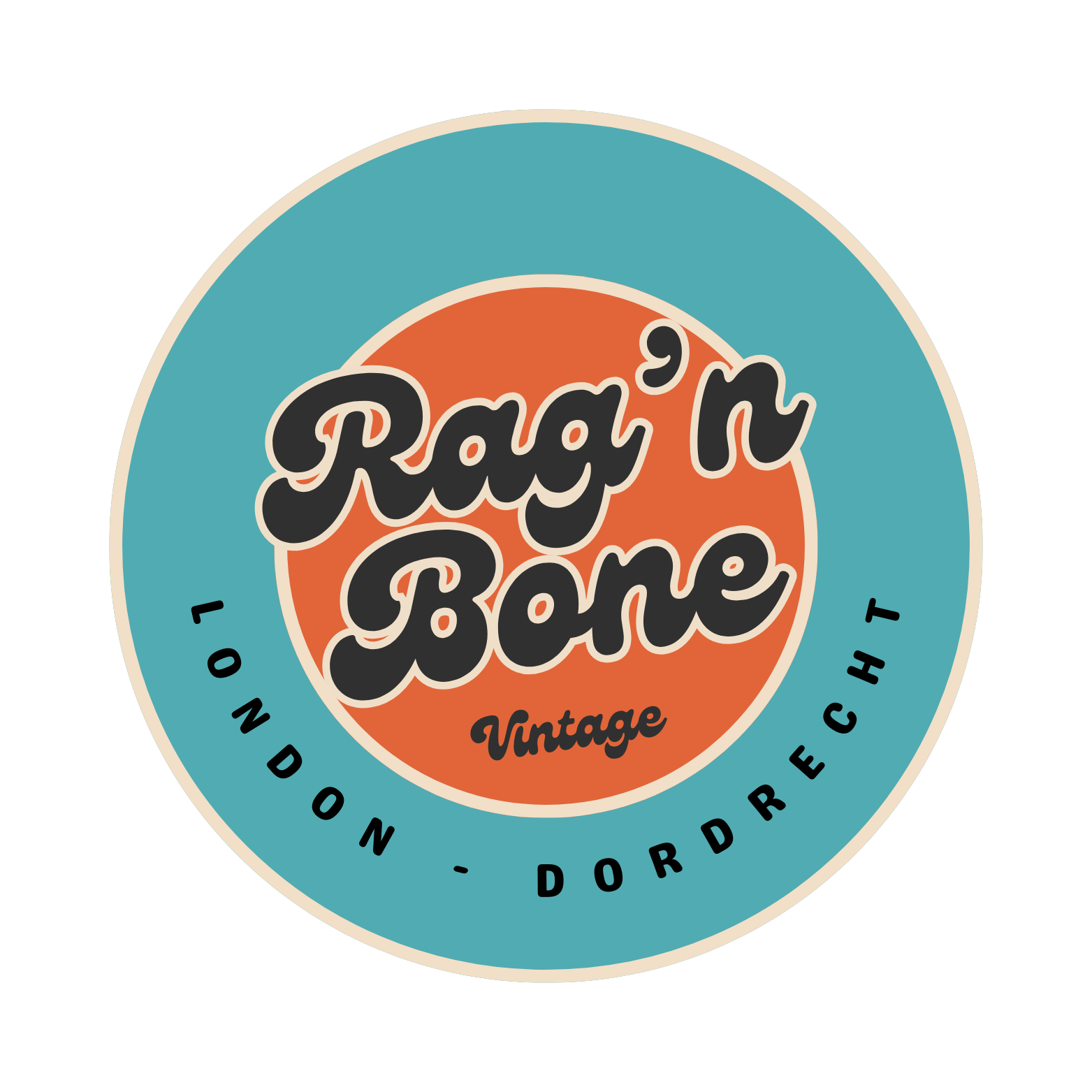Shipping NL & BE
Fast fashion & charity shops
Is fast fashion killing thrift stores and charity shops?
Why thrift stores are struggling with low-quality donations due to fast fashion
As many of our regular customers know, Rag ‘n Bone Vintage began in London from a weekend hobby of ‘treasure hunting’ in the many vintage markets and charity shops for unique vintage pieces. We were sometimes amazed by the unique bargains we found, however more often than not were shocked by the price of any secondhand branded garments and decided there must be a way to streamline the experience whilst making vintage clothing accessible to all budgets.
Thrift stores and charity shops – once a go-to for affordable, durable secondhand clothing – are seeing a shift. In recent years, the quality of clothing donations has dropped, driven by the fast fashion industry and, more recently, an even faster business model known as “ultrafast fashion.” According to Kringloop Nederland, a Dutch thrift industry organisation, while donations of furniture and electronics are on the rise, quality clothing donations are falling off sharply. But what’s behind this trend, and what might it mean for thrift and charity shops and their shoppers?
What is fast fashion?
Fast fashion has long been associated with cheap, rapidly produced clothing however ultrafast fashion is pushing this trend to new extremes. Originating from mostly online retailers, ultrafast fashion brings designs from concept to production within a matter of days. This lightning fast turnaround time allows brands to capitalise on fleeting trends almost instantly, providing consumers with a seemingly endless stream of low-cost, on-trend items.
Unfortunately, this low-cost approach has a downside: the clothing is often of subpar quality and doesn’t last long. Kringloop Nederland director Rachel Heijne notes that it’s the first time thrift stores have been so affected by fast fashion’s impact. “We see that the quality of the items is really bad. These are clothes that break after a few washes. You can’t sell them in the thrift store,” she says. It’s a marked change, with fewer items suitable for resale due to poor durability and construction.
Thrift and charity shops facing new challenges
Thrift stores are increasingly struggling to attract donations of sufficient-quality clothing as ultrafast fashion floods the market. Clothing that used to last for years now barely withstands a few washes. Charity shops simply cannot resell these items, and many end up discarded rather than donated. In a sense, ultrafast fashion competes directly with thrift stores: these clothes are inexpensive, often costing the same as secondhand garments, making it understandably tempting for consumers to choose something brand new rather than buying secondhand clothing.
Combatting this temptation however is a growing group of eco-concious shoppers who still value the quality, retro style and dopamine hit of a successful hunt in vintage, thrift and charity stores. The secondhand market helps reduce waste, offering items that would often otherwise end up discarded.
We have seen first-hand the undeniable popularity of our Reworked collection, which takes multiple damaged sweaters and gives them an upcycled life, creating a unique new garment from two or more sweatshirts previously destined for the landfill. For more details on how upcycling garments are changing the fashion world, see our article.
As many of our regular customers know, Rag ‘n Bone Vintage began in London from a weekend hobby of ‘treasure hunting’ in the many vintage markets and charity shops for unique vintage pieces. We were sometimes amazed by the unique bargains we found, however more often than not were shocked by the price of any secondhand branded garments and decided there must be a way to streamline the experience whilst making vintage clothing accessible to all budgets.
Thrift stores and charity shops – once a go-to for affordable, durable secondhand clothing – are seeing a shift. In recent years, the quality of clothing donations has dropped, driven by the fast fashion industry and, more recently, an even faster business model known as “ultrafast fashion.” According to Kringloop Nederland, a Dutch thrift industry organisation, while donations of furniture and electronics are on the rise, quality clothing donations are falling off sharply. But what’s behind this trend, and what might it mean for thrift and charity shops and their shoppers?
The second hand revolution
At Rag ‘n Bone Vintage we are often asked why brands such as Ralph Lauren feature so heavily in our collections and the answer is simple: high-quality garments that can look as good as new after years of washing and wearing. Although we do stock multiple unbranded items that we love and quality check, an ‘A brand’ such as Carhartt minimises concerns a customer may be dissatisfied in the future after multiple wears and washes. Second hand branded garments give us the peace of mind that our products will hold up to the test of time.
Supporting sustainable fashion choices
As ultrafast fashion grows, shoppers can make a positive impact by carefully considering their purchases. Buying fewer, better-quality items and supporting second hand fashion is one way to counter the negative impacts of fast fashion. Additionally, consumers can participate in the circular economy by donating high-quality items to thrift stores and avoiding the temptation of ultrafast fashion that doesn’t last.
In the end, thrift and charity stores remain important community spaces that embody the value of reuse. By being mindful of how we shop, we can help ensure these community hubs continue to thrive, offering affordable and sustainable options that support both people and the planet.
